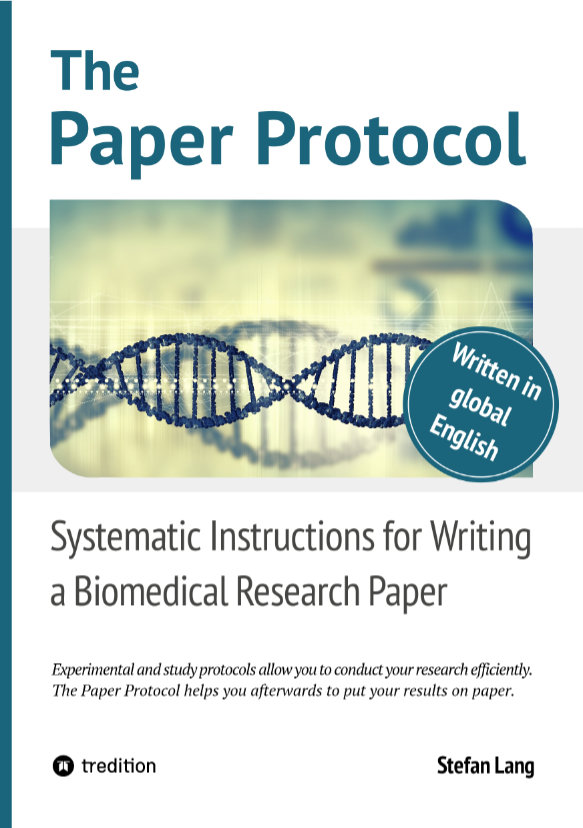The Paper Protocol
Systematic Instructions for Writing a Biomedical Research Paper
As a scientist, you’re trained to work with high precision and quality and to conduct your research efficiently with the help of clear experimental protocols, systematic work instructions, and standard operating procedures.
How helpful would it be to have a clear and systematic writing protocol that helps you afterwards to put your research results on paper?
The Paper Protocol offers systematic instructions for writing biomedical research papers. With The Paper Protocol, you can write with higher precision and quality, helping you publish your work more efficiently.
‘The Paper Protocol – Systematic Instructions for Writing a Biomedical Research Paper’ has been published with tredition GmbH, Hamburg, Germany.
- ISBN Paperback: 978-3-347-53987-7
- ISBN Hardcover: 978-3-347-53989-1
- ISBN e-Book: 978-3-347-53995-2
‘The Paper Protocol – Systematic Instructions for Writing a Biomedical Research Paper’ is now available at online bookstores.
Available
The idea behind the Paper Protocol
Experimental and study protocols allow you to conduct your research efficiently. The Paper Protocol helps you afterwards to put your results on paper. It structures the writing process into four defined phases, describing each task required to write a biomedical research paper that convinces both the journal’s reviewers and your readers.
- [1] Concept – define the key messages of your paper.
- [2] Outline – develop a convincing storyline.
- [3] Draft – write a scientifically sound manuscript.
- [4] Editing – polish the style of your paper.
The Paper Protocol provides you with precise instructions and several text examples illustrating their practical application. Just put the book next to your keyboard and start writing.
Systematic Instructions written in global English
This book is written in global English, making it easier for non-native English speaking students and scientists to read and understand.
Scientists who want their work read and cited need to publish in global English, which has become the language of the scientific community.


